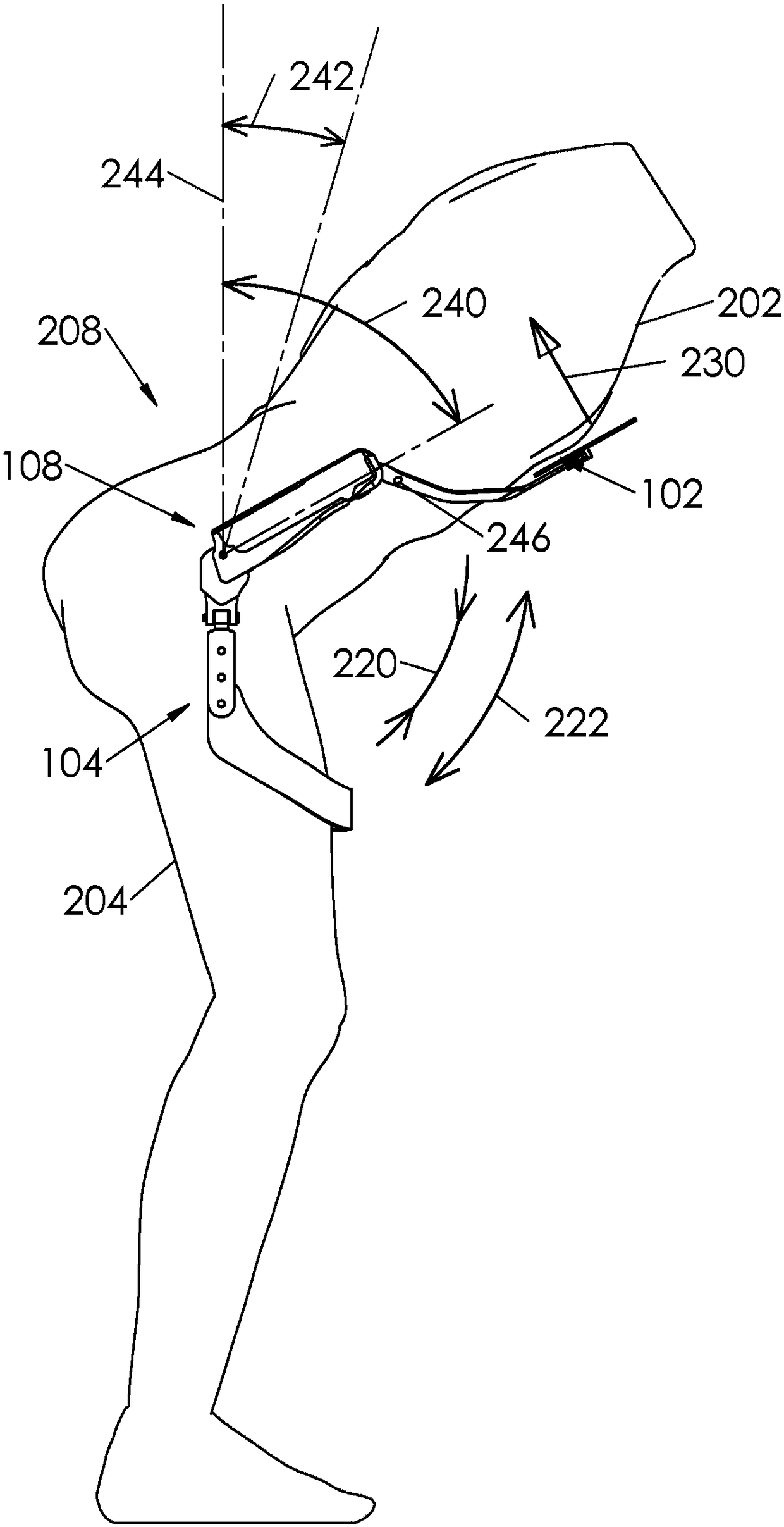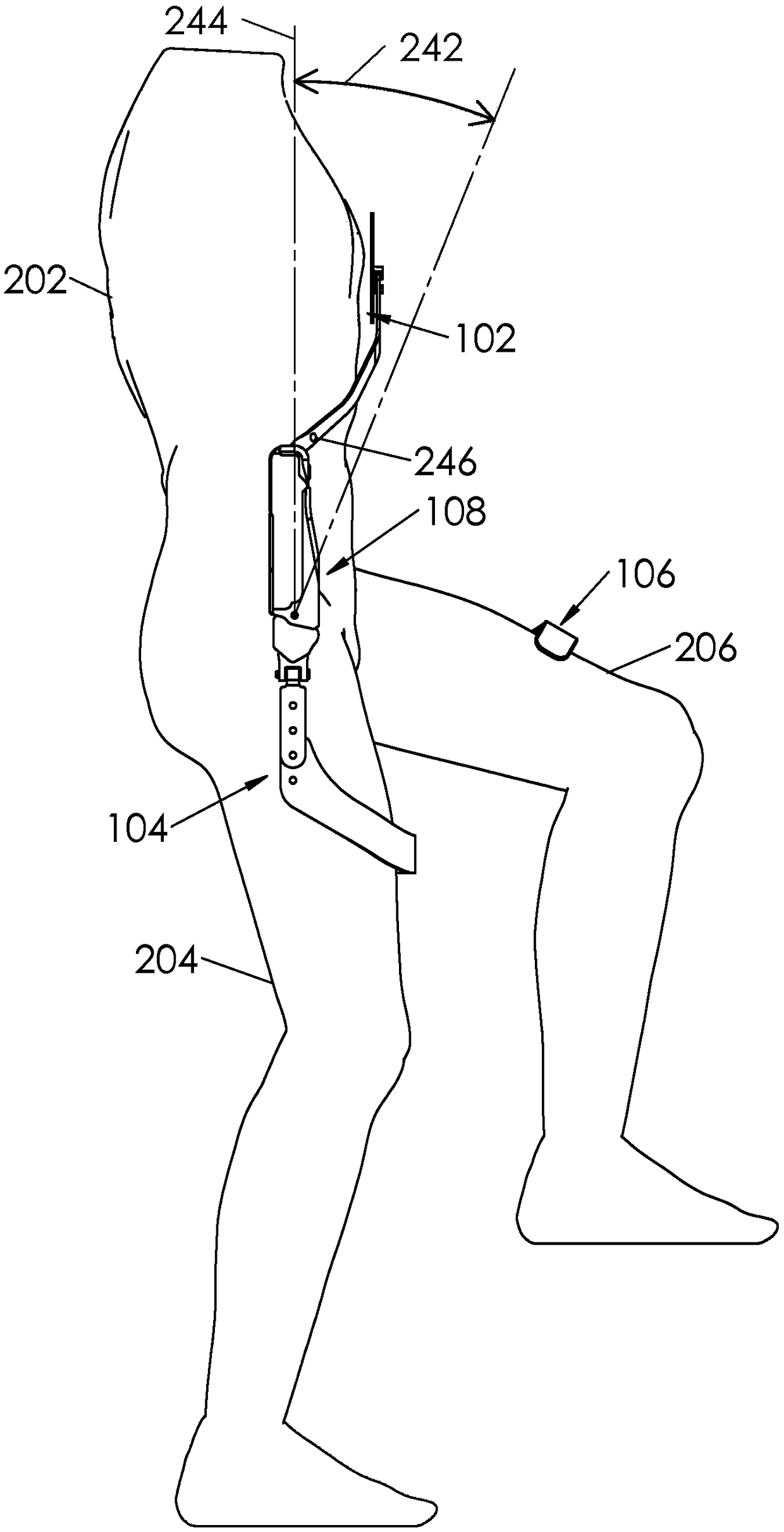Trunk supporting exoskeleton and method of use
An exoskeleton and torso technology, applied in the field of exoskeleton, can solve the problems of not being able to sit comfortably, not distinguishing between walking and bending, and not being able to walk comfortably
- Summary
- Abstract
- Description
- Claims
- Application Information
AI Technical Summary
Problems solved by technology
Method used
Image
Examples
Embodiment Construction
[0050] figure 1 An embodiment in which the torso supports the exoskeleton 100 is shown. It is configured to be worn by the person 200 to reduce the muscle strength of the person's back during forward bending. figure 2 A person 200 is shown during forward bending. The torso supporting exoskeleton 100 includes a supporting torso 102 that is configured to be coupled to a torso 202 of a person. The human torso 202 is defined as the central part of the person from which the neck and limbs extend. The torso includes the chest and abdomen.
[0051] The torso supporting exoskeleton 100 also includes a first thigh connector 104 and a second thigh connector 106 that are configured to be coupled to the corresponding thighs 204 and 206 of the person 200. Such as figure 1 As shown, the first thigh connecting piece 104 and the second thigh connecting piece 106 are configured to move in unison with the human thighs 204 and 206, respectively, so as to cause the corresponding first thigh conne...
PUM
 Login to View More
Login to View More Abstract
Description
Claims
Application Information
 Login to View More
Login to View More - R&D
- Intellectual Property
- Life Sciences
- Materials
- Tech Scout
- Unparalleled Data Quality
- Higher Quality Content
- 60% Fewer Hallucinations
Browse by: Latest US Patents, China's latest patents, Technical Efficacy Thesaurus, Application Domain, Technology Topic, Popular Technical Reports.
© 2025 PatSnap. All rights reserved.Legal|Privacy policy|Modern Slavery Act Transparency Statement|Sitemap|About US| Contact US: help@patsnap.com



